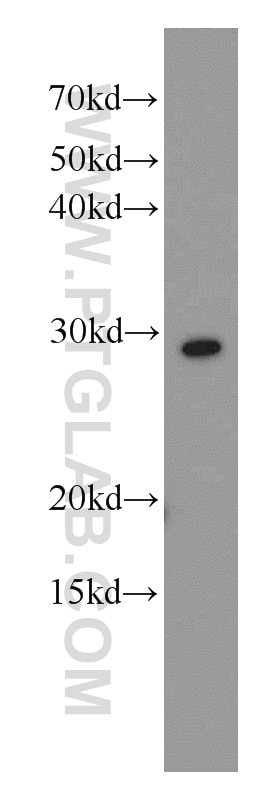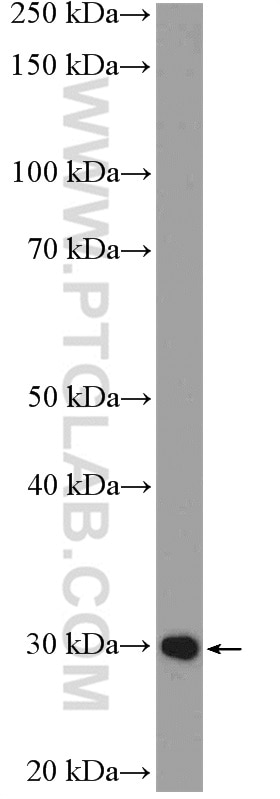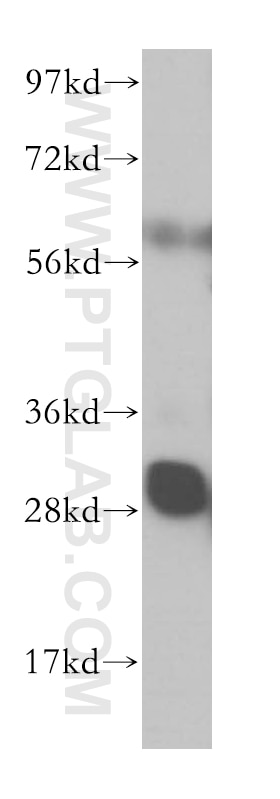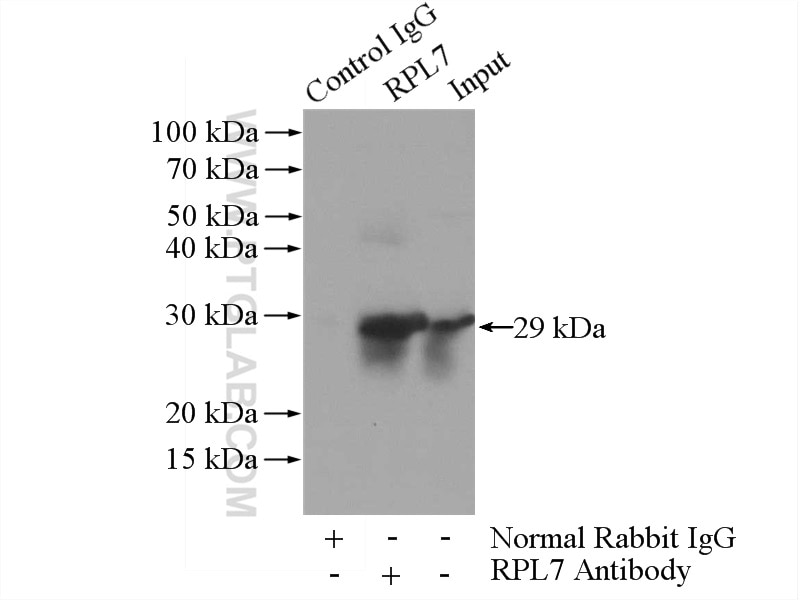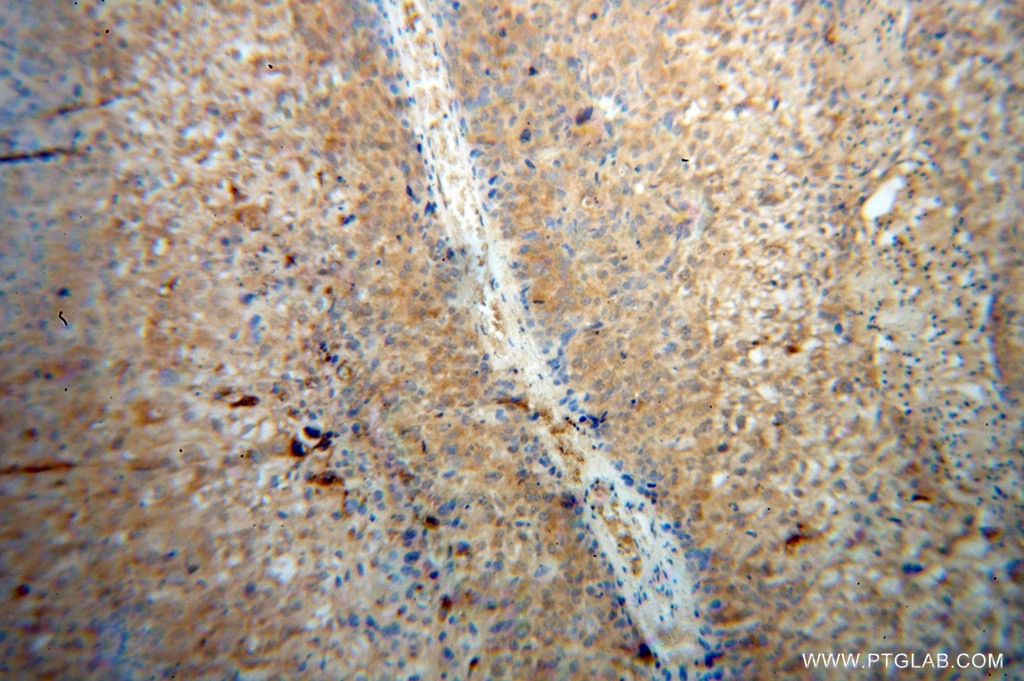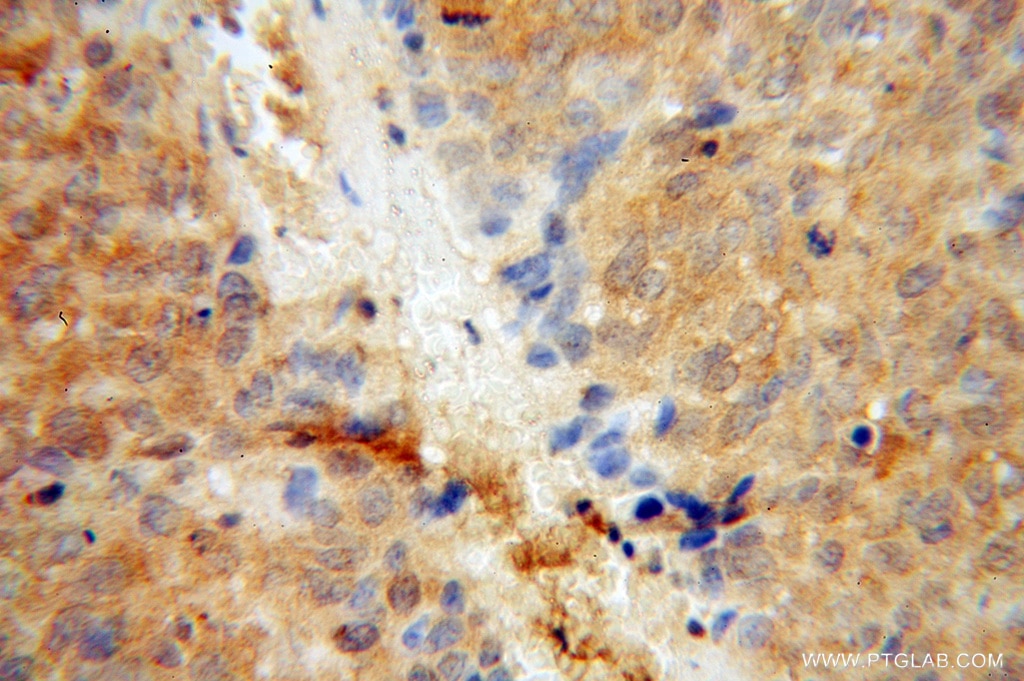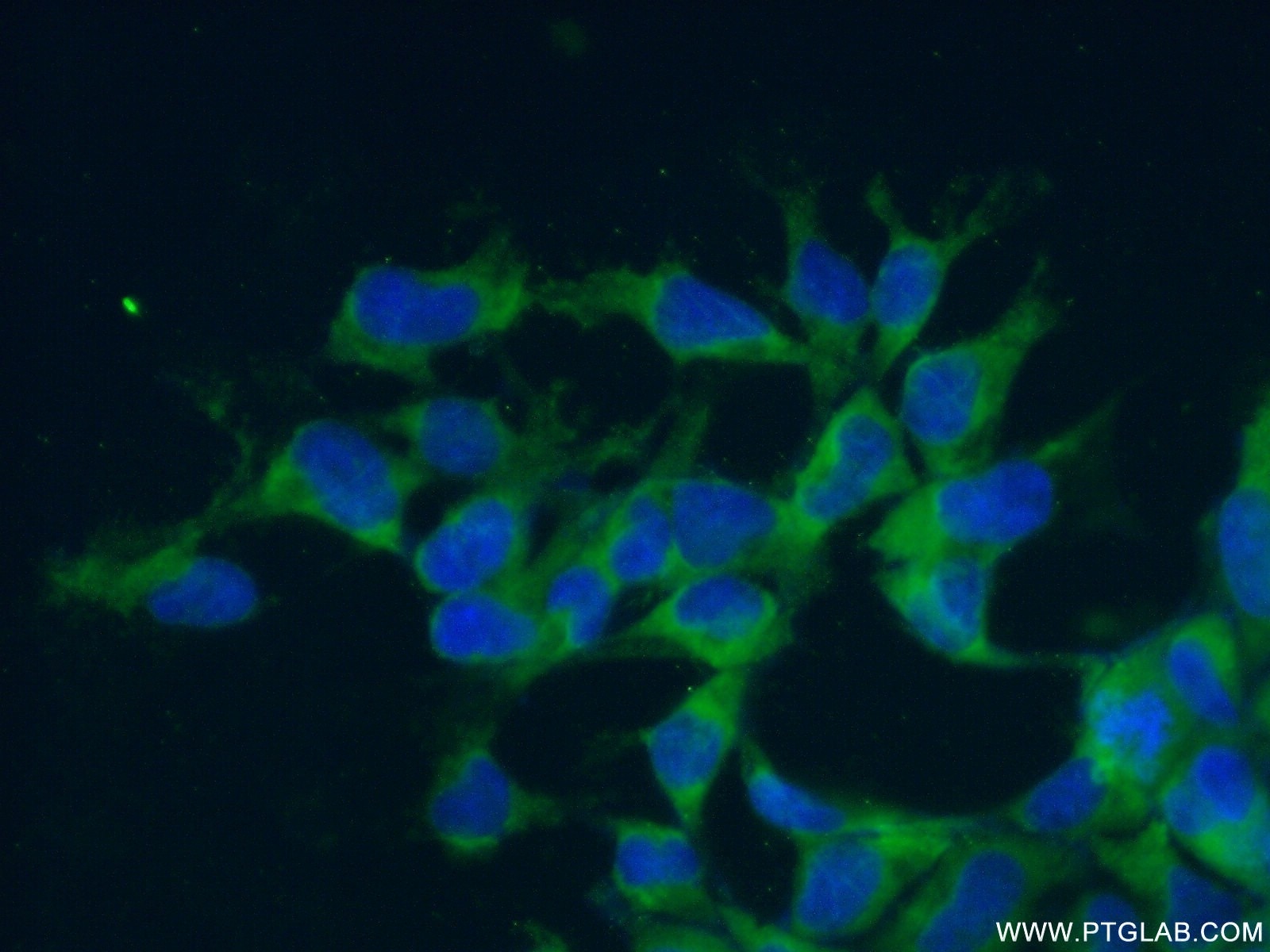Anticorps Polyclonal de lapin anti-RPL7
RPL7 Polyclonal Antibody for WB, IHC, IF/ICC, IP, ELISA
Hôte / Isotype
Lapin / IgG
Réactivité testée
Humain, rat, souris
Applications
WB, IHC, IF/ICC, IP, RIP, ELISA
Conjugaison
Non conjugué
N° de cat : 14583-1-AP
Synonymes
Galerie de données de validation
Applications testées
| Résultats positifs en WB | cellules HEK-293, tissu rénal de souris |
| Résultats positifs en IP | cellules HEK-293 |
| Résultats positifs en IHC | tissu de cancer de la peau humain il est suggéré de démasquer l'antigène avec un tampon de TE buffer pH 9.0; (*) À défaut, 'le démasquage de l'antigène peut être 'effectué avec un tampon citrate pH 6,0. |
| Résultats positifs en IF/ICC | cellules HEK-293 |
Dilution recommandée
| Application | Dilution |
|---|---|
| Western Blot (WB) | WB : 1:500-1:3000 |
| Immunoprécipitation (IP) | IP : 0.5-4.0 ug for 1.0-3.0 mg of total protein lysate |
| Immunohistochimie (IHC) | IHC : 1:20-1:200 |
| Immunofluorescence (IF)/ICC | IF/ICC : 1:50-1:500 |
| It is recommended that this reagent should be titrated in each testing system to obtain optimal results. | |
| Sample-dependent, check data in validation data gallery | |
Applications publiées
| WB | See 11 publications below |
| IHC | See 1 publications below |
| IF | See 2 publications below |
| RIP | See 1 publications below |
Informations sur le produit
14583-1-AP cible RPL7 dans les applications de WB, IHC, IF/ICC, IP, RIP, ELISA et montre une réactivité avec des échantillons Humain, rat, souris
| Réactivité | Humain, rat, souris |
| Réactivité citée | rat, Humain, souris |
| Hôte / Isotype | Lapin / IgG |
| Clonalité | Polyclonal |
| Type | Anticorps |
| Immunogène | RPL7 Protéine recombinante Ag6104 |
| Nom complet | ribosomal protein L7 |
| Masse moléculaire calculée | 29 kDa |
| Poids moléculaire observé | 29-30 kDa |
| Numéro d’acquisition GenBank | BC006095 |
| Symbole du gène | RPL7 |
| Identification du gène (NCBI) | 6129 |
| Conjugaison | Non conjugué |
| Forme | Liquide |
| Méthode de purification | Purification par affinité contre l'antigène |
| Tampon de stockage | PBS with 0.02% sodium azide and 50% glycerol |
| Conditions de stockage | Stocker à -20°C. Stable pendant un an après l'expédition. L'aliquotage n'est pas nécessaire pour le stockage à -20oC Les 20ul contiennent 0,1% de BSA. |
Informations générales
The mammalian ribosome comprises 79 ribosomal proteins and four rRNAs, which combine in equimolar ratios to form the small (40S) and large (60S) subunits. Ribosome proteins are a direct and critical target of the PI3K pathway in promoting growth.[PMID:15289434]. RPL7 binds to G-rich structures in 28S rRNA, and plays a regulatory role in the translation apparatus, inhibits cell-free translation of mRNAs. In addition, RPL7 is suggested to have a role as an integral part of natural freeze tolerance[PMID: 18706984]. Besides, RPL7 is responsible for its normal ribosome functions including the nuclear targeting, ribosome assembly and translation[PMID:17258209].
Protocole
| Product Specific Protocols | |
|---|---|
| WB protocol for RPL7 antibody 14583-1-AP | Download protocol |
| IHC protocol for RPL7 antibody 14583-1-AP | Download protocol |
| IF protocol for RPL7 antibody 14583-1-AP | Download protocol |
| IP protocol for RPL7 antibody 14583-1-AP | Download protocol |
| Standard Protocols | |
|---|---|
| Click here to view our Standard Protocols |
Publications
| Species | Application | Title |
|---|---|---|
J Hematol Oncol METTL16 promotes liver cancer stem cell self-renewal via controlling ribosome biogenesis and mRNA translation | ||
Nat Cell Biol METTL16 exerts an m6A-independent function to facilitate translation and tumorigenesis. | ||
Front Endocrinol (Lausanne) Glucose controls co-translation of structurally related mRNAs via the mTOR and eIF2 pathways in human pancreatic beta cells | ||
Science Endosomal lipid signaling reshapes the endoplasmic reticulum to control mitochondrial function |
